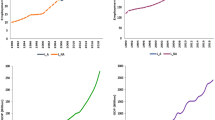Abstract
This paper describes the multisectoral macroeconomic model of a small developing economy in transition, in order to highlight linkages between agriculture and the rest of the economy, and consequences of external opening up. Agriculture is a supply sector, sticky in the short range with market clearing by price adjustment. The non agricultural sector is demand-led, with imperfect competition (and hence sticky prices and indexed nominal wages). According to this dual theoretical pattern, labor market is segmented with an unlimited supply in the rural area. This part of the labor force is employed in the agricultural sector and in the rural non agricultural one. Urban workers are employed in the non agricultural sector but may face unemployment. The wage gap between urban and rural areas induces migration, according to a Harris-Todaro mechanism.
This model is applied to the Vietnam case. A calibrated quantitative model performs a base line simulation from 1993 to 2010, following approximately the path planned by the Vietnamese government. Finally, this model is used to sketch various scenarios, such as traditional macroeconomic packages, structural reforms, and external shocks.
Similar content being viewed by others
Author information
Authors and Affiliations
Rights and permissions
About this article
Cite this article
Sand-Zantman, A., Brillet, J., Le Van, C. et al. Modelling Transition And International Opening In Asia: The Case Of Vietnam With A Comparison With China And The “Asian Tigers”. Comp Econ Stud 42, 93–130 (2000). https://doi.org/10.1057/ces.2000.25
Published:
Issue Date:
DOI: https://doi.org/10.1057/ces.2000.25




